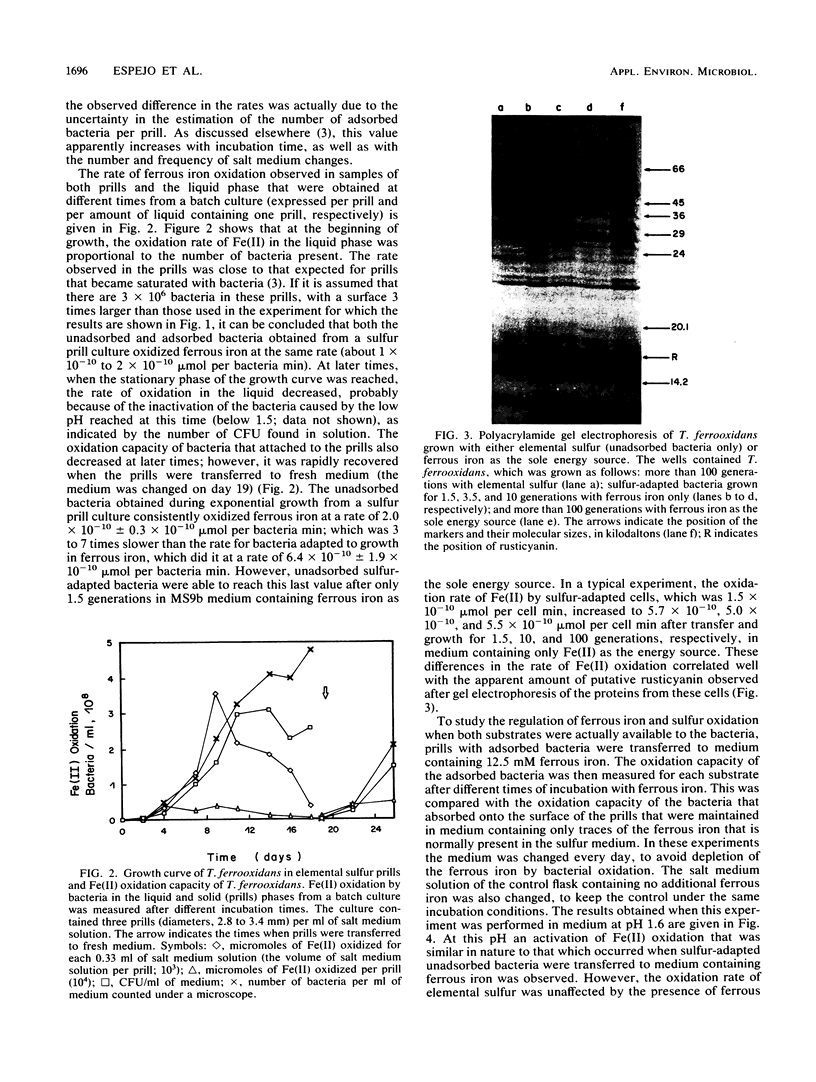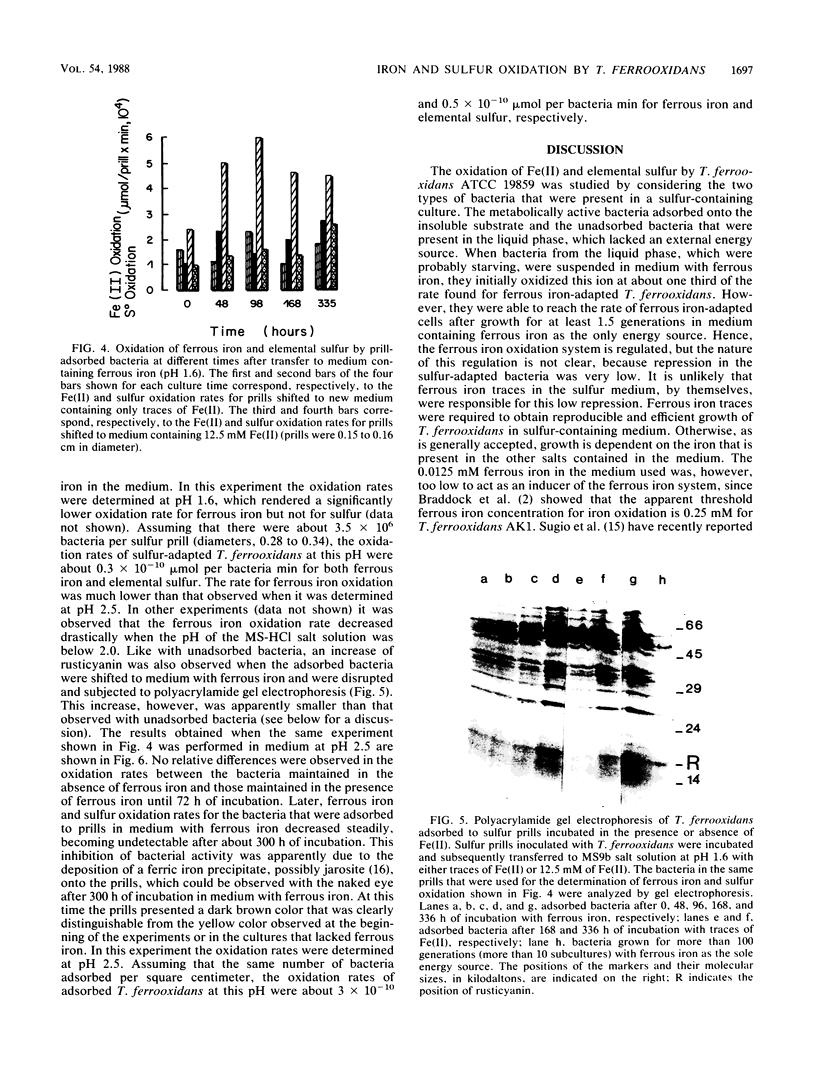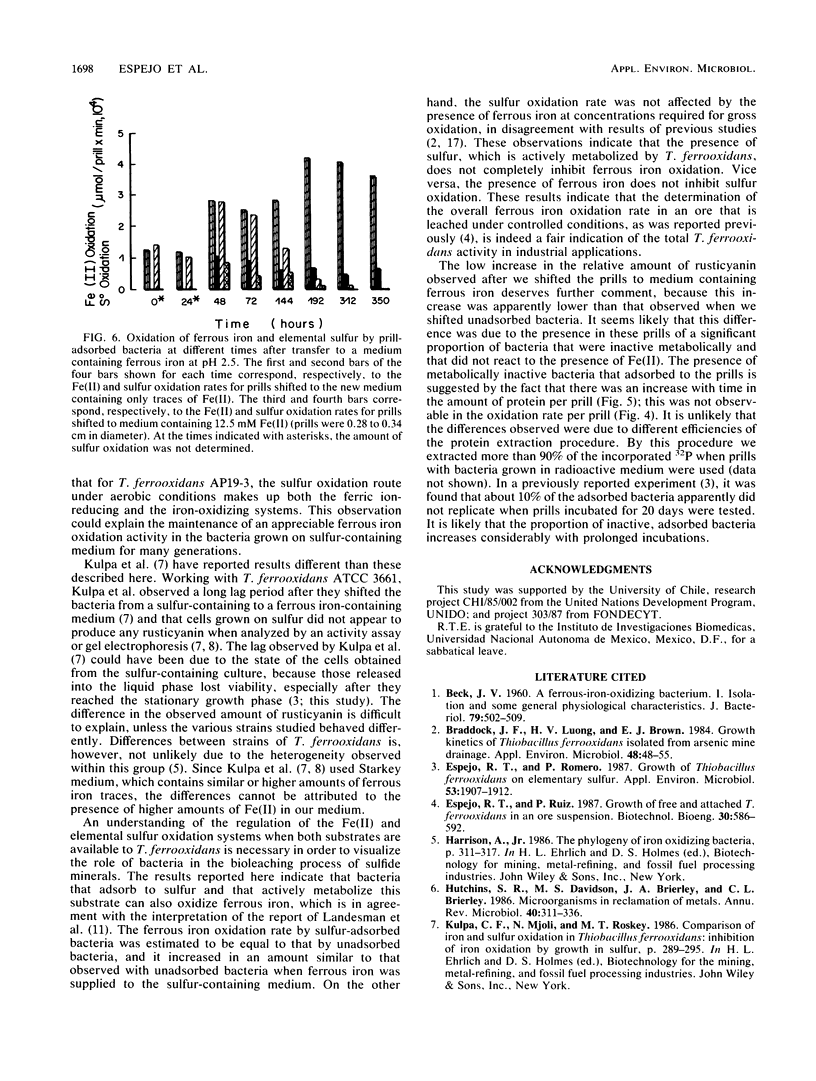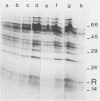Abstract
The oxidation of ferrous iron and elemental sulfur by Thiobacillus ferrooxidans that was absorbed and unabsorbed onto the surface of sulfur prills was studied. Unadsorbed sulfur-grown cells oxidized ferrous iron at a rate that was 3 to 7 times slower than that of ferrous iron-grown cells, but sulfur-grown cells were able to reach the oxidation rate of the ferrous iron-adapted cells after only 1.5 generations in a medium containing ferrous iron. Bacteria that were adsorbed to sulfur prills oxidized ferrous iron at a rate similar to that of unadsorbed sulfur-grown bacteria. They also showed the enhancement of ferrous iron oxidation activity in the presence of ferrous iron, even though sulfur continued to be available to the bacteria in this case. An increase in the level of rusticyanin together with the enhancement of the ferrous iron oxidation rate were observed in both sulfur-adsorbed and unadsorbed cells. On the other hand, sulfur oxidation by the adsorbed bacteria was not affected by the presence of ferrous iron in the medium. When bacteria that were adsorbed to sulfur prills were grown at a higher pH (ca. 2.5) in the presence of ferrous iron, they rapidly lost both ferrous iron and sulfur oxidation capacities and became inactive, apparently because of the deposition of a jarosite-like precipitate onto the surface to which they were attached.
Full text
PDF





Images in this article
Selected References
These references are in PubMed. This may not be the complete list of references from this article.
- BECK J. V. A ferrous-ion-oxidizing bacterium. I. Isolation and some general physiological characteristics. J Bacteriol. 1960 Apr;79:502–509. doi: 10.1128/jb.79.4.502-509.1960. [DOI] [PMC free article] [PubMed] [Google Scholar]
- Braddock J. F., Luong H. V., Brown E. J. Growth Kinetics of Thiobacillus ferrooxidans Isolated from Arsenic Mine Drainage. Appl Environ Microbiol. 1984 Jul;48(1):48–55. doi: 10.1128/aem.48.1.48-55.1984. [DOI] [PMC free article] [PubMed] [Google Scholar]
- Espejo R. T., Romero P. Growth of Thiobacillus ferrooxidans on Elemental Sulfur. Appl Environ Microbiol. 1987 Aug;53(8):1907–1912. doi: 10.1128/aem.53.8.1907-1912.1987. [DOI] [PMC free article] [PubMed] [Google Scholar]
- Hutchins S. R., Davidson M. S., Brierley J. A., Brierley C. L. Microorganisms in reclamation of metals. Annu Rev Microbiol. 1986;40:311–336. doi: 10.1146/annurev.mi.40.100186.001523. [DOI] [PubMed] [Google Scholar]
- Laemmli U. K. Cleavage of structural proteins during the assembly of the head of bacteriophage T4. Nature. 1970 Aug 15;227(5259):680–685. doi: 10.1038/227680a0. [DOI] [PubMed] [Google Scholar]
- Landesman J., Duncan D. W., Walden C. C. Oxidation of inorganic sulfur compounds by washed cell suspensions of Thiobacillus ferrooxidans. Can J Microbiol. 1966 Oct;12(5):957–964. doi: 10.1139/m66-129. [DOI] [PubMed] [Google Scholar]
- Margalith P., Silver M., Lundgren D. G. Sulfur oxidation by the iron bacterium Ferrobacillus ferrooxidans. J Bacteriol. 1966 Dec;92(6):1706–1709. doi: 10.1128/jb.92.6.1706-1709.1966. [DOI] [PMC free article] [PubMed] [Google Scholar]




